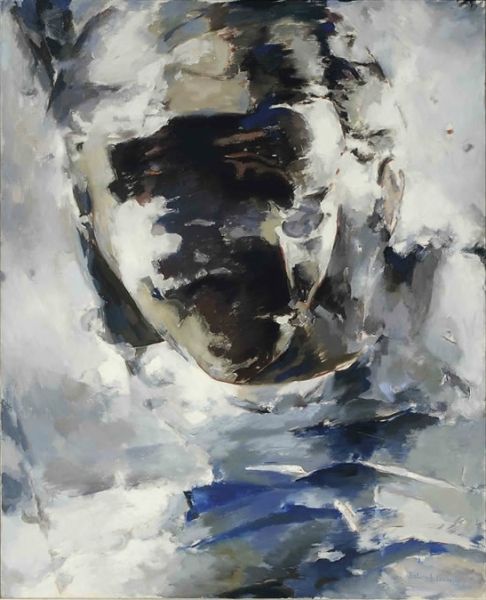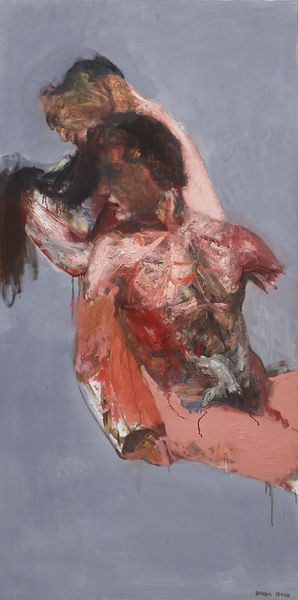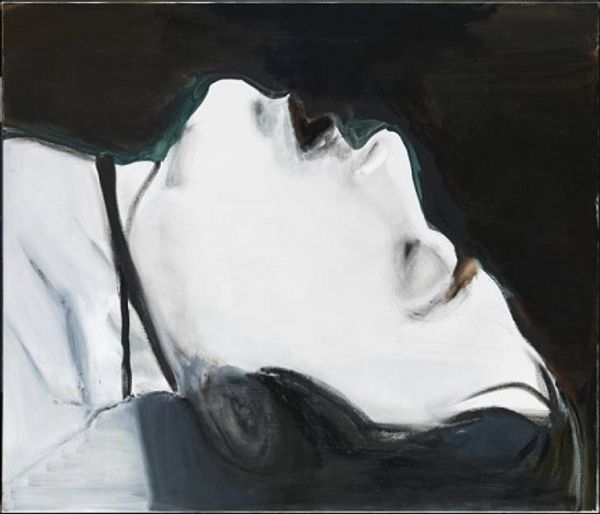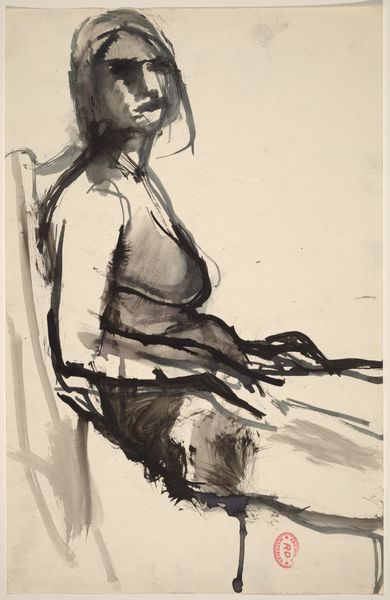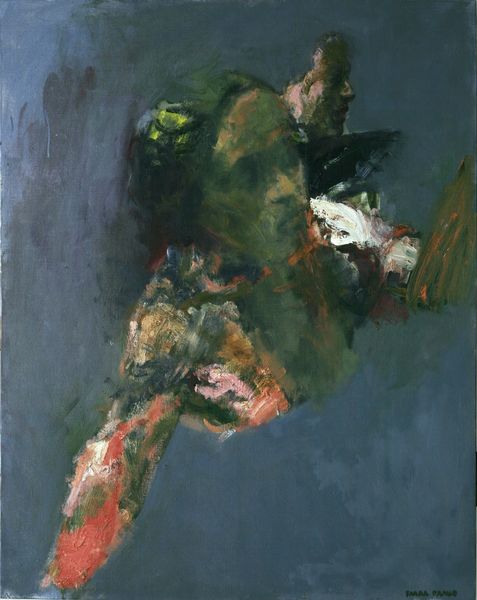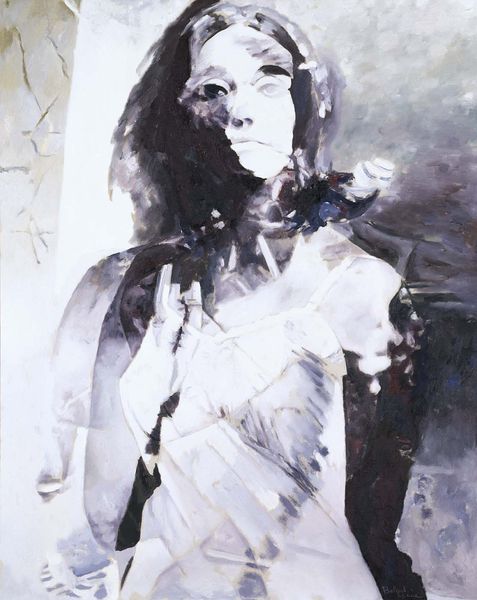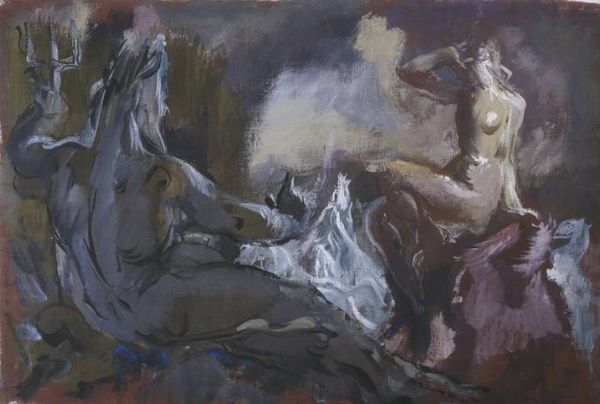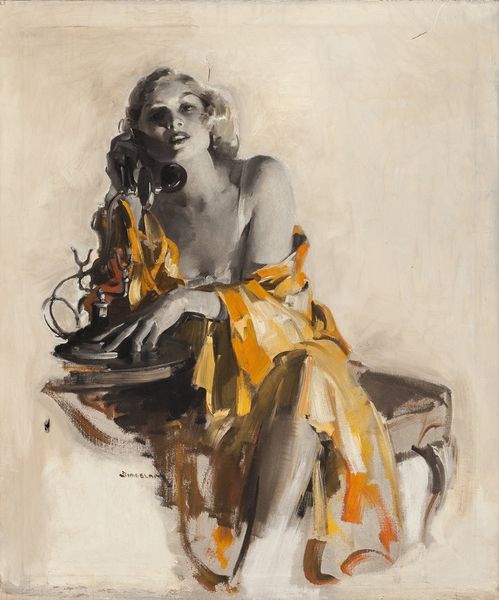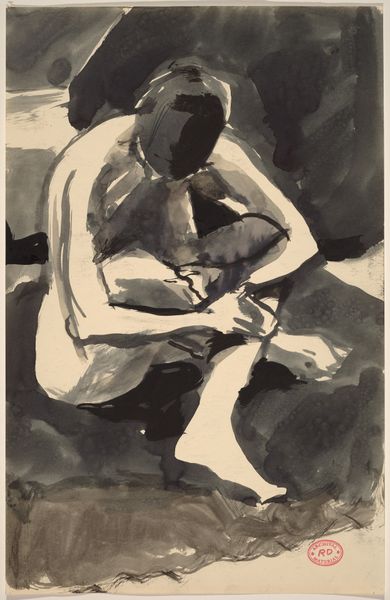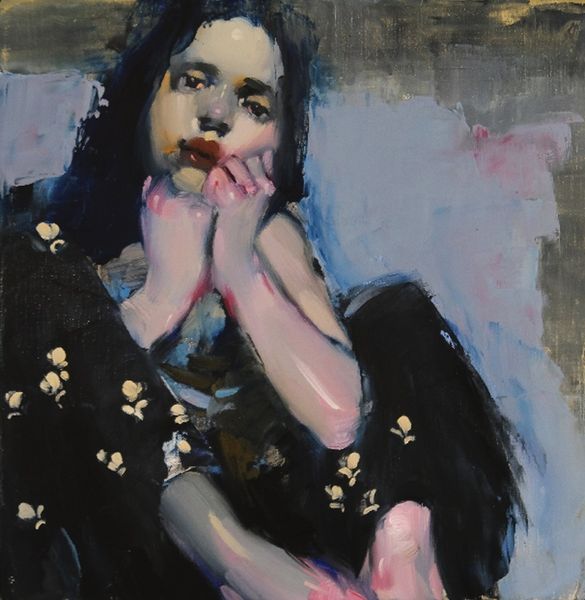
Copyright: Balcomb Greene,Fair Use
Editor: Balcomb Greene's "Woman and Man by the Sea," from 1974, rendered in what appears to be oil paint, possesses such a somber and haunting presence. The figures seem caught between states of being. What resonates with you most when you look at this piece? Curator: The figures strike me as archetypes, emerging from the collective unconscious. The sea, traditionally a symbol of the unconscious mind, seems to birth them into a transient reality. Consider how the ambiguous rendering of their forms creates a sense of universal experience rather than individual portraiture. Doesn't the lack of sharp detail blur the boundaries between self and other, suggesting an almost primal connection? Editor: That's a fascinating point about the sea and the collective unconscious! I hadn't considered that. The haziness definitely lends itself to the idea of something emerging, almost dreamlike. I had initially focused on the potential isolation, but the primal connection makes more sense. Curator: Consider too the symbolism inherent in the nude figure. Stripped bare, both literally and figuratively, they exist in a state of vulnerability, exposed not only to the elements, but also to their innermost selves. How might the artist be commenting on our shared human condition through the absence of societal coverings? Editor: So it's like the beach becomes a liminal space where they are vulnerable and stripped of identity in this symbolic space. It allows Greene to investigate this really raw emotion and primal state. That’s a fascinating reading, thank you. Curator: Indeed! The power of images resides not just in what is seen, but in the echoes they awaken within us, echoing through history and resonating with the fundamental truths of our existence.
Comments
No comments
Be the first to comment and join the conversation on the ultimate creative platform.
